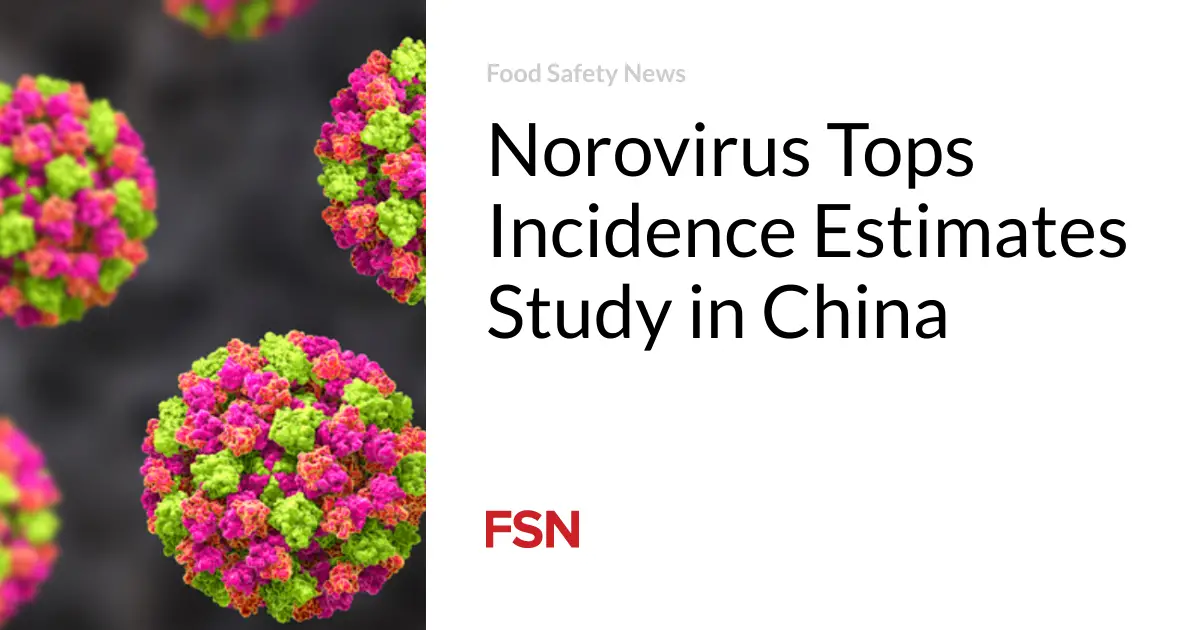
A study in China has provided estimates on the incidence of five pathogens, with norovirus coming at the top.
By examining rates across gender and age groups, scientists can identify priority populations for targeted preventive interventions aimed at reducing disease burden. These insights help in the development of public health policies and the management of food safety risks.
The traditional passive surveillance system often misses specific pathogens and is plagued by under-reporting and under-diagnosis, complicating an understanding of the disease burden. However, a study published in China CDC Weekly found that the establishment of a laboratory-based foodborne disease surveillance platform in 2011 has enhanced disease tracking.
The study developed a pyramid model to estimate the incidence of five pathogens. The model considers steps such as patients seeking care, hospitals collecting stool specimens, labs analyzing these samples, and the subsequent identification of pathogens.
Incidence by age and gender
Scientists merged data from hospital surveillance and previous community surveys in China with data from the population census to estimate the incidence of diarrheal diseases. Pathogens included Salmonella, Vibrio parahaemolyticus, Shigella, diarrheagenic E. coli (DEC), and norovirus.
The prevalence of infection by five pathogens varied significantly between genders, with males showing a higher overall prevalence. Salmonella, DEC, and norovirus were more common in men than in women. In contrast, Vibrio parahaemolyticus was more prevalent among women.
Southern China had the highest prevalence of these pathogens, while northeastern China had the lowest.
Norovirus showed the highest incidence rate, predominantly affecting those aged 1 to 4. However, only a fraction of these cases are attributable to foodborne transmission. Salmonella was most prevalent in infants under 1 year old, followed by the 1 to 4-year-old age group.
The highest incidence of Vibrio parahaemolyticus was among people aged 35 to 44, likely due to a preference for raw or undercooked seafood, including shellfish, said scientists. DEC was most frequent in the 20 to 24-year-old group. Shigella had the lowest incidence, with the highest rates among children aged 5 to 9.
“This study provides the first estimates of the incidence of five pathogens, classified by age and gender, derived from active surveillance data on foodborne diseases in China. These findings serve as a crucial foundation for informed decision-making and regulation in assessing food safety risks based on disease burden,” said researchers.
Mushroom poisoning
In a different outbreak report, four patients in Yunnan Province were affected by Cordierites frondosus poisoning in two incidents. Cordierites frondosus is a type of toxic mushroom.
The condition of two patients deteriorated after they were re-exposed to sunlight on the seventh day following initial poisoning. In the other incident, two patients reported a mild, needle-like sensation on areas of their skin exposed to the sun on the twelfth day after poisoning.
Scientists said it was advisable to avoid sunlight for at least two weeks following poisoning.
In May and June 2023, four cases of suspected mushroom poisoning were treated at a hospital—patients presented with photosensitive dermatitis 21 to 45 hours after ingesting wild wood ear mushrooms. The China CDC partnered with the local hospital to investigate.
Findings suggest that poisonings were triggered by the consumption of Cordierite fronds, a wild mushroom species that resembles the traditionally edible Auricularia fungi.
Symptoms of photosensitive dermatitis include redness, swelling, itching, blister formation, and sharp pain in the facial region and hands. These symptoms are amplified upon exposure to sunlight.
The four patients were three males and one female aged 45 to 57. Two patients had gastrointestinal symptoms three hours after mushroom consumption. Development of photosensitive dermatitis in all patients occurred 21 to 45 hours after consuming 30 to 50 grams of mushrooms.
Local officials have installed signs in villages about poisonous mushrooms indigenous to Yunnan. The signs aim to educate residents on identifying toxic mushrooms and understand the risks of mushroom poisoning. Since taking this action, no other instances of similar poisoning have been reported.
(To sign up for a free subscription to Food Safety News, click here.)





